
Year: 2014
Lady Slipper
June 13, 2014A Lady Slipper is an orchid that grows throughout the northern hemisphere. There are several species, and all of them are rare to uncommon depending on the country. This beautiful orchid is difficult to cultivate, even as orchids go. It requires a special soil fungus for seeds to germinate, and the Lady Slipper does not transplant well. To make matters worse, there is a special demand for this orchid, and not just from gardeners who feel they must have one. The root stock has calming, pain relieving, and hallucinogenic qualities that have prompted overharvesting of the plant, which is never abundant even under ideal circumstances.I have had the good fortune of stumbling across this flower on occasion, ever since I was a girl in Ohio. Last week I was hiking on a popular mountain path when I spied two blooms right next to the trail. I decided to come back early the next day to take a picture, crossing my fingers that no one would arrive before me and take the plants. Sure enough, when I returned the next morning they were gone. I scouted around the area, however, and I found a nice specimen that was slightly better hidden.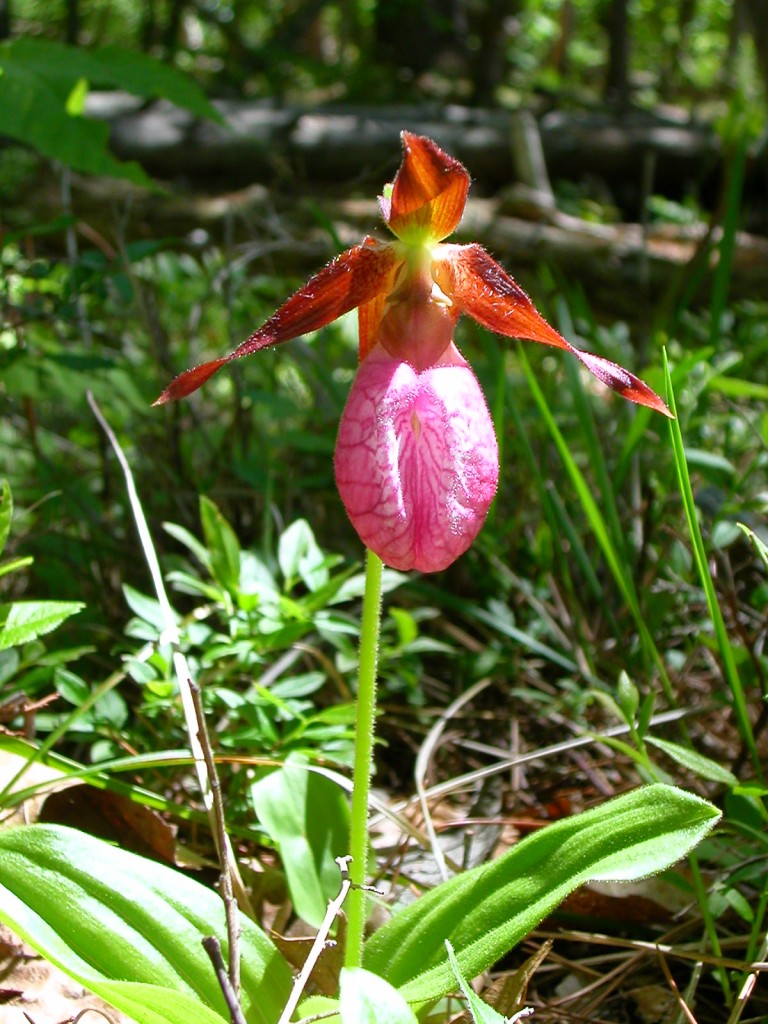 In researching this post I discovered that one variety of Lady Slipper does indeed look like a shoe. I had always assumed from looking at the flower that the name referred to a different kind of “slipper.” What would you think?
In researching this post I discovered that one variety of Lady Slipper does indeed look like a shoe. I had always assumed from looking at the flower that the name referred to a different kind of “slipper.” What would you think? 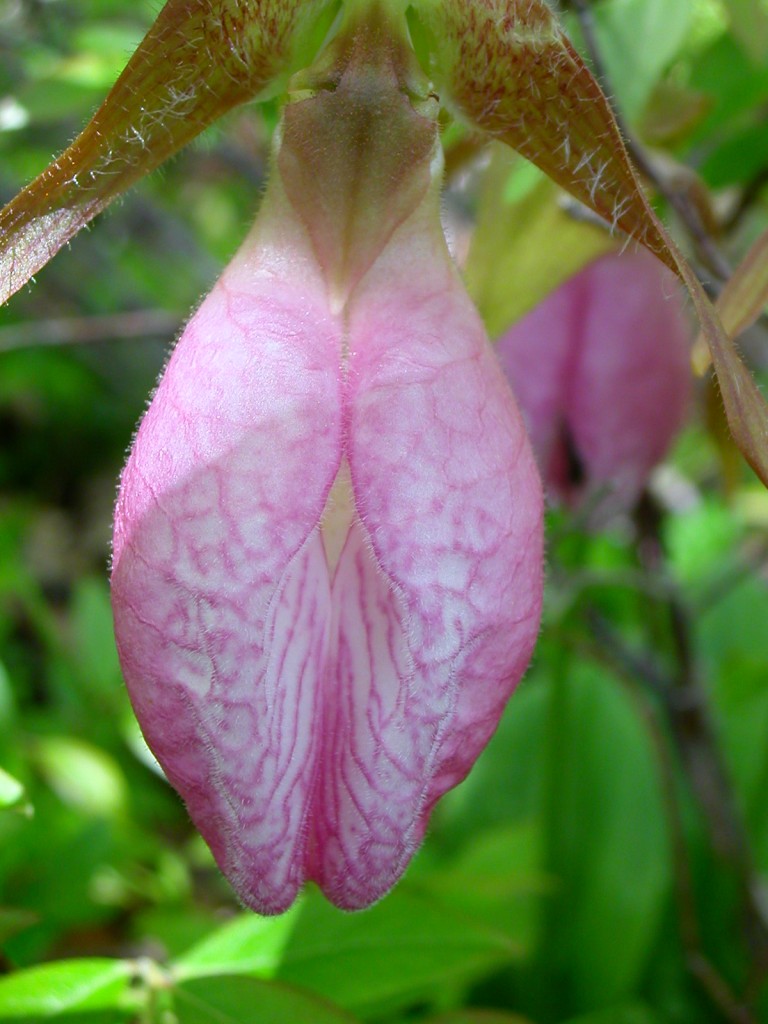 Before heading down the mountain with my photographic trophy, I decided to bushwhack to an open ledge for a snapshot of the view, and I came across a whole clump of Lady Slipper plants. There were seven blooms, one for each of the Seven Sisters (Pleiades). These nymph siblings are priestesses of Artemis.
Before heading down the mountain with my photographic trophy, I decided to bushwhack to an open ledge for a snapshot of the view, and I came across a whole clump of Lady Slipper plants. There were seven blooms, one for each of the Seven Sisters (Pleiades). These nymph siblings are priestesses of Artemis.  SourcesGraves, Robert. The Greek Myths. London: Penguin, 1960.McGhan, Patricia J. Ruta. “Pink ladies slipper (Cypripedium acule Ait.)” US Dept. of Agriculture.
SourcesGraves, Robert. The Greek Myths. London: Penguin, 1960.McGhan, Patricia J. Ruta. “Pink ladies slipper (Cypripedium acule Ait.)” US Dept. of Agriculture.
Looking at the Sow Goddess
June 6, 2014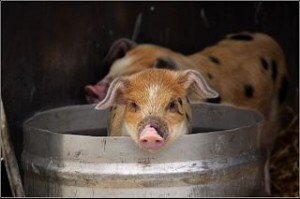
Song of Khepri
May 30, 2014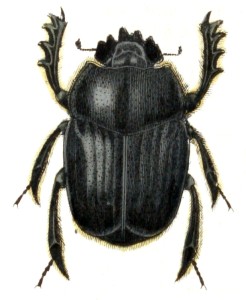 In the beginning the beginning beganIn the becoming the becoming becameI have come into being in the coming of my beingas I came into being in beginning timeTo the ancient Egyptians, the animating force Khepri was best exemplified by the scarab, also known as the Dung Beetle. This little critter descends on the scat of herbivores in droves to consume undigested nutrients. To consume a meal in peace, the scarab pats a piece of dung into a ball and rolls the scat some distance away, sometimes hiding the trophy in an underground niche. The Dung Beetle lays her eggs in concealed dung balls, which the larvae subsist on. The young adult emerges from the dung ball seemingly self-created.By pushing his large dung ball over the sand the scarab illustrated to the Egyptians the force pushing the sun across the sky in the daytime, then pushing the sun under the earth through the night. The scarab was not merely a symbol of this force, named Khepri, but an incarnation of a pervasive presence which manifested through this insect in a pure form.
In the beginning the beginning beganIn the becoming the becoming becameI have come into being in the coming of my beingas I came into being in beginning timeTo the ancient Egyptians, the animating force Khepri was best exemplified by the scarab, also known as the Dung Beetle. This little critter descends on the scat of herbivores in droves to consume undigested nutrients. To consume a meal in peace, the scarab pats a piece of dung into a ball and rolls the scat some distance away, sometimes hiding the trophy in an underground niche. The Dung Beetle lays her eggs in concealed dung balls, which the larvae subsist on. The young adult emerges from the dung ball seemingly self-created.By pushing his large dung ball over the sand the scarab illustrated to the Egyptians the force pushing the sun across the sky in the daytime, then pushing the sun under the earth through the night. The scarab was not merely a symbol of this force, named Khepri, but an incarnation of a pervasive presence which manifested through this insect in a pure form.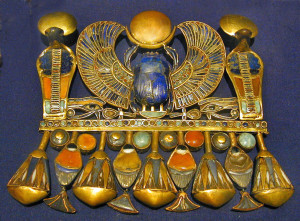
Kheper-i kheper kheperu kheper-kuy n kheperu m khepra kheperu m sep tepy.
I first heard this in 1987 at the Isis Oasis in Geyserville, California and it has always stayed with me. More information can be found in a book called Eternal Egypt: Ancient Rituals for a Modern World by Richard J. Reidy and at the website for a group called House of Keperu.
Key of Magic
May 23, 2014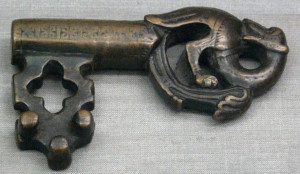 I’ve always thought that witchcraft is the best path for spiritual materialists, because we get to play with so many toys (only we call them tools). I have assembled most of the common implements of magic such as broom, cauldron, crystal ball, wand, athame, white handled knife, girdle, sword, chalice, pentacle necklace, and holey stone. I have materials to make a scrying mirror and staff, but have never gotten around to it. Still, I think the typical discussion of witch tools has some glaring omissions. One important tool seldom mentioned is the comb. Another is the distaff. At one point I speculated that our magical arsenal should be updated to include the key, such an important part of everyday life and filled with so much spiritual symbolism. Naturally when I began to research the subject I found that actual keys, as well as symbolic ones, have long held an important place in Pagan magic.
I’ve always thought that witchcraft is the best path for spiritual materialists, because we get to play with so many toys (only we call them tools). I have assembled most of the common implements of magic such as broom, cauldron, crystal ball, wand, athame, white handled knife, girdle, sword, chalice, pentacle necklace, and holey stone. I have materials to make a scrying mirror and staff, but have never gotten around to it. Still, I think the typical discussion of witch tools has some glaring omissions. One important tool seldom mentioned is the comb. Another is the distaff. At one point I speculated that our magical arsenal should be updated to include the key, such an important part of everyday life and filled with so much spiritual symbolism. Naturally when I began to research the subject I found that actual keys, as well as symbolic ones, have long held an important place in Pagan magic.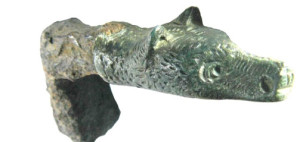
Keys had so many occult connotations that medieval magicians made great use of real keys as magic tools whenever any sort of opening, releasing, or letting go was wanted. Iron keys were buried with the dead in Ionia, to unlock the gates of the underworld. Germans kept a key in a baby’s cradle so the fairies would not be able to seize and kidnap the child.

Blue Jay Communique
May 16, 2014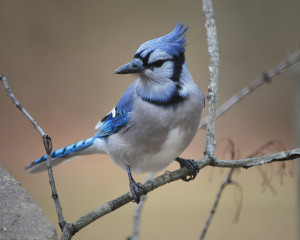
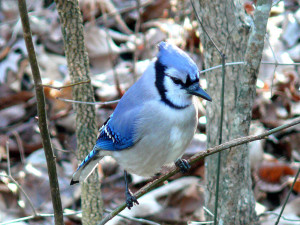
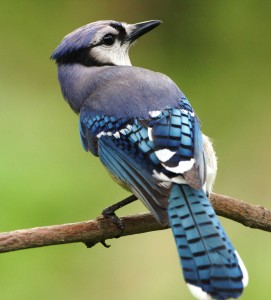
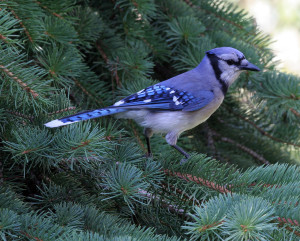
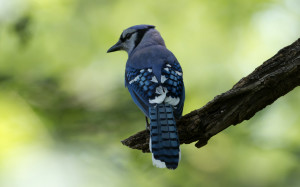
Jumping Spiders and Jellyfish Eyes
May 9, 2014So inevitable was the development of vision among motile creatures that it has developed along two different evolutionary pathways: the brain in vertebrates and the epidermis in invertebrates. That’s right, the skin. Among the more primitive jellyfishes, the eyes are raised patches of cells, called eyespots. These eyes cannot form images but can detect the direction light is coming from. The surface of the entire jellyfish appears to be photosensitive, sensing light even when the eyespots are covered. 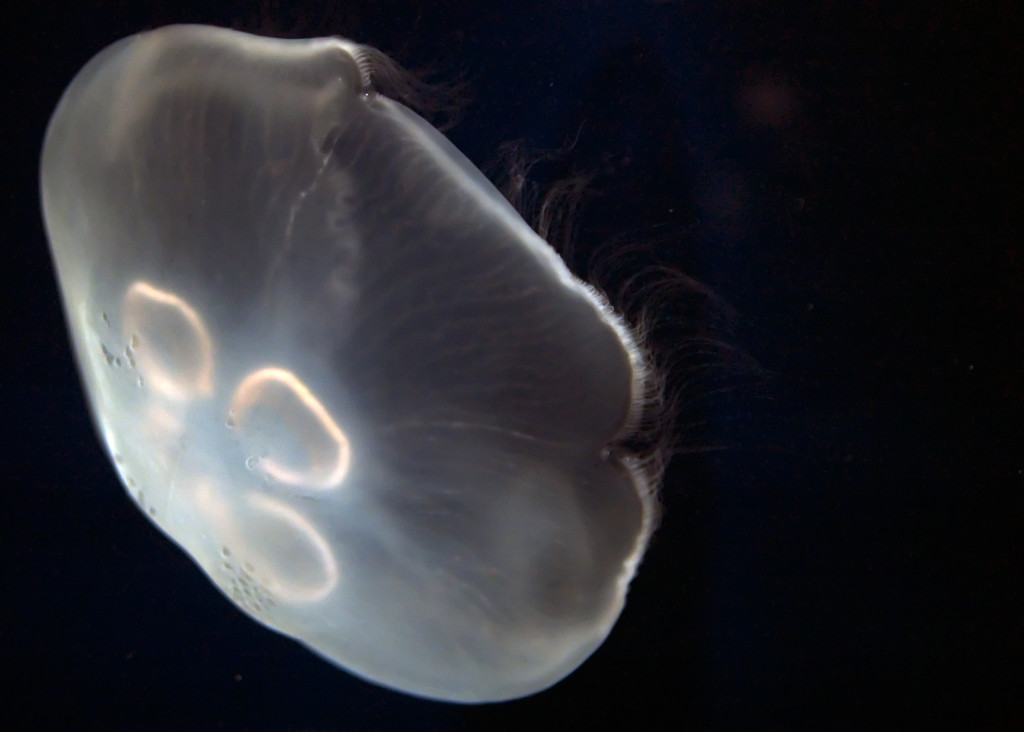
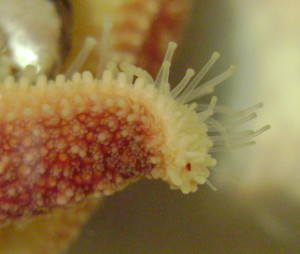
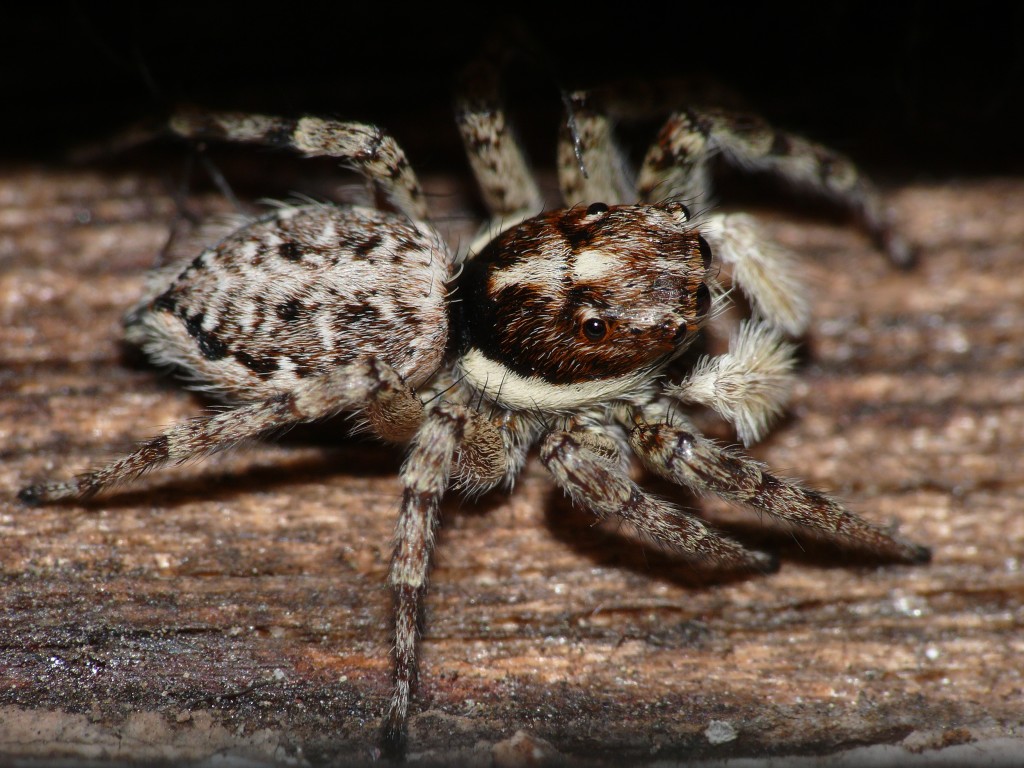
SourceSinclair, Sandra. How Animals See: Other Visions of Our World. New York: Facts on File, 1985.PostscriptIn the course of my research I discovered that “Jellyfish Eyes” is the name of a 2013 film by Takashi Murakami currently being screened at indie art theatres around the USA. I chose the title of this post before realizing this, as I was truly interested in actual jellyfish eyes. I may be the first to point out that the eyes on these “jellyfish” creatures are in no way anatomically correct. Alas, few sci-fi artists care about such things. Here is the trailer.
Ianuaria, Celtic Goddess of Music
May 2, 2014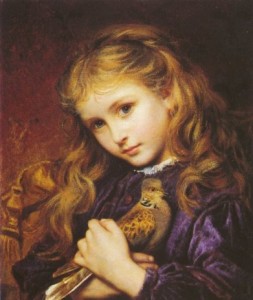
Ipnops
April 25, 2014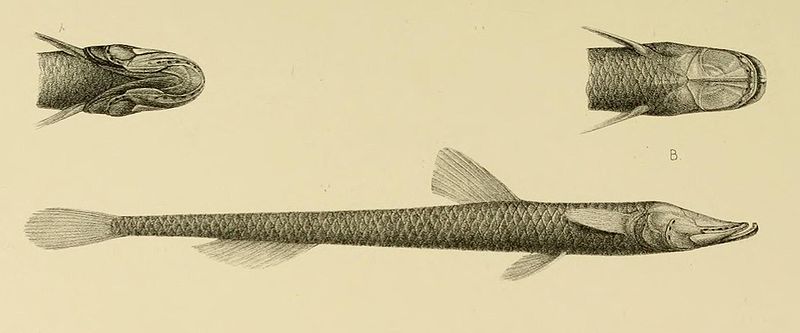
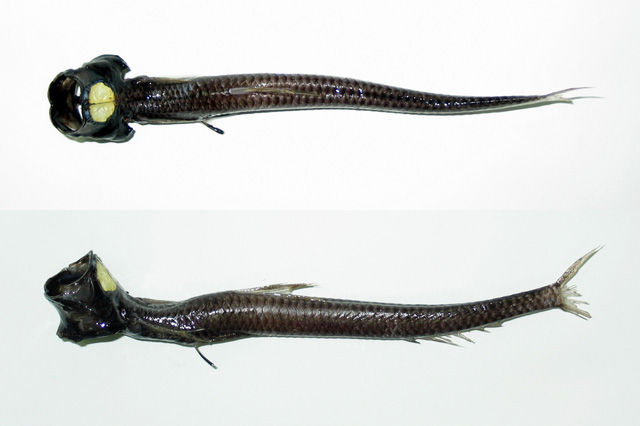
http://media.eol.org/content/2009/05/19/16/68617_orig.jpg (Photo R. B. Reyes) Ipnops Agassizii
http://upload.wikimedia.org/wikipedia/commons/thumb/1/17/Ipnops.JPG/640px-Ipnops.JPG Ipnops Murrayi
Human and Animal Vision
April 18, 2014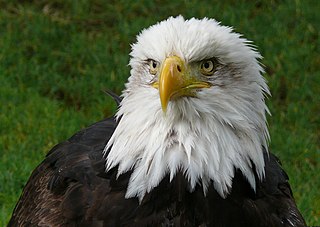 It turns out that humans are highly anthropocentric in how we conceive of vision. The measures that we use tend to be areas where problems in human vision arise: focusing at distant and close range, seeing at night, depth perception, field of vision, and colorblindness. We don’t factor in things that most humans can do easily, such as recognize patterns, and we also don’t think about things we can’t do at all, such as recognize the source of diffuse light.Here is a list of factors that vision entails (which may not be complete):
It turns out that humans are highly anthropocentric in how we conceive of vision. The measures that we use tend to be areas where problems in human vision arise: focusing at distant and close range, seeing at night, depth perception, field of vision, and colorblindness. We don’t factor in things that most humans can do easily, such as recognize patterns, and we also don’t think about things we can’t do at all, such as recognize the source of diffuse light.Here is a list of factors that vision entails (which may not be complete):
Ability to detect light (this is the core function of vision)Ability to locate the source of diffuse light (polarization)Ability to see in low lightAbility to see in bright lightSensitivity to changes in contrastAbility to see colorsRange of color visionAbility to distinguish hues within a narrow band of colorDepth perceptionDetection of movementAbility to see stationary objectsField of vision (including ability to see up and down as well as on a 360 degree plane)Focusing ability (including speed of focus on near and far objects)Ability to detect images at great distancesClarity of vision at far and close range (accommodation)Ability to detect shapes, both solid and outlineAbility to recognize patternsRapidity of image formation (analogous to frames per second in a camera)Clarity of underwater visionAbility to detect images below the surface of the water from above (and vice versa)Ability to compensate for idiosyncrasies in refraction (closely related to the factor above)Ability to compensate for movement (self locomotion as well as movement in the environment)Formation of a single image versus split visionCapacity for visual organs to withstand environmental challenges such as cold, pressure, and debris
I have not been able to find information comparing abilities to see and interpret auras.  So which animal has the best vision? I was a few chapters into this book before I realized what a silly question this is. Each animal has a type of vision perfectly adapted to its environmental niche. No eye or set of eyes can function in all areas extraordinarily well, because there are a few areas that are mutually exclusive and so it’s a choice between specialization or compromise. If I did have to pick the animal with the best vision, however, it would be any member of the ape family, including humans. No doubt many will not believe me and will dismiss this as more anthropocentricism. I say this because while there are animals who outperform us in every area of vision, except perhaps pattern recognition, our eyes function competently in a wide range of environments and circumstances. Our eyes do little that is spectacular but almost everything well. This is probably the main reason we have adapted to so many environments around the globe.SourceSinclair, Sandra. How Animals See: Other Visions of Our World. New York: Facts on File, 1985.Photo credits: Eagle–Vtornet; Chimpanzee–Thomas Lersch
So which animal has the best vision? I was a few chapters into this book before I realized what a silly question this is. Each animal has a type of vision perfectly adapted to its environmental niche. No eye or set of eyes can function in all areas extraordinarily well, because there are a few areas that are mutually exclusive and so it’s a choice between specialization or compromise. If I did have to pick the animal with the best vision, however, it would be any member of the ape family, including humans. No doubt many will not believe me and will dismiss this as more anthropocentricism. I say this because while there are animals who outperform us in every area of vision, except perhaps pattern recognition, our eyes function competently in a wide range of environments and circumstances. Our eyes do little that is spectacular but almost everything well. This is probably the main reason we have adapted to so many environments around the globe.SourceSinclair, Sandra. How Animals See: Other Visions of Our World. New York: Facts on File, 1985.Photo credits: Eagle–Vtornet; Chimpanzee–Thomas Lersch
